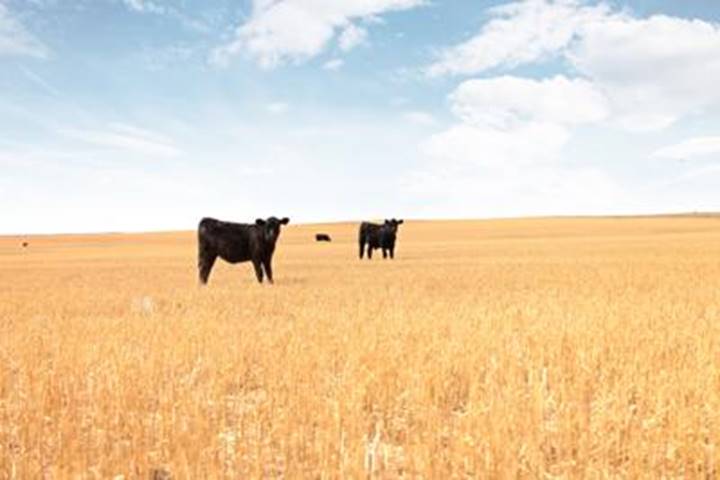The Prairie Star: Beef industry looks to fix issues with price transparency
Beef industry looks to fix issues with price transparency
By MORGAN ROSE The Prairie Star
Sep 12, 2020 Updated Sep 14, 2020
The meat packing portion of the American beef industry has long been a bone of contention. With only four major meat packing companies controlling 85 percent of the beef market in the United States, ranchers nowadays are suffering from lowering live cattle prices while boxed beef prices continue to spiral upward.
Tensions against the packing industry peaked in August of 2019 when a Tyson processing facility in Holcomb, Kan., caught fire and was badly damaged. The event at this singular processing plant led to downward pressures across the entire live cattle market. Boxed beef, on the other hand, jumped in price.
Unfortunately, the Holcomb fire was not the last black swan market event to plague the U.S. cattle industry. Some seven months after the fire, fed cattle again were backlogged as the COVID-19 pandemic caused a decrease in processing capacity, and again, live cattle prices plummeted with boxed beef prices setting record highs.
With an obvious trend of market coercion being highlighted in the beef industry, Iowa Senator Chuck Grassley and other members of Congress, including both of Montana’s Senators, Jon Tester and Steve Daines, introduced legislation in May of 2020 that aims to promote price transparency while increasing market competition within the beef industry.
The bill mandates that 50 percent of a meat packer’s weekly volume of beef be bought on the spot market. Further, the bill states that those fed cattle that are bought must be slaughtered within 14 days of purchase. Currently, fed cattle are not required to be purchased on the cash/spot market and the delivery window is 30 days.
Referred to simply as the 50/14 legislation, the bill has garnered mixed responses from industry organizations on the national level. R-CALF and U.S. Cattlemen’s Association support the bill, while the National Cattlemen’s Beef Association does not.
All three of the these major organization’s constituents can agree issues of price transparency have crippled the beef markets, but as an industry whose markets have traditionally been completely free of any sort of government intervention, some eyebrows are being raised since this bill puts a government mandate on a portion of the cattle business.
Gilles Stockton, a cattle rancher from Grass Range, Mont., and president of the Montana Cattlemen’s Association (MCA), says there is a split, even within that organization with some members applauding this ground breaking legislation, while others, Stockton included, have reservations about the bill.
“I think it is a blind alley and there are other things we should be pushing that would be an actual solution to our market dysfunctions,” Stockton stated.
Stockton continued by pointing out, in order to tell any business entity how and in what way they are to buy/sell their commodity, there must first be a law allowing that sort of control. Stockton is not aware any such law exists, so he questions if the 50/14 legislation is even enforceable. Moreover, Stockton argues the real issues within the beef industry are more within the captive fed cattle markets and is less associated with limited cash-trading and price reporting.
“If the packers have cattle that are committed to them without being fairly priced, then they can leverage those cattle to manipulate the spot market. They are favoring themselves and that should be blatantly illegal under the Packers and Stockyards Act,” he explained.
As a longtime cattlemen and advocate for the industry, Stockton has become well-versed in the nuances of the 1921 Packers and Stockyards Act, the beef industry’s only protection against market manipulation. This strong anti-trust legislation did its part in diversifying the beef packing industry until about 1975. At that point, economic theory had changed, and as a result, enforcing the Packers and Stockyards Act became less of a priority.
“From 1975 until today we’ve had nothing but greater and greater packer concentration and a less competitive and transparent market,” Stockton says.
Some, like Stockton, believe the 50/14 legislation is just “kicking the can down the road” so to speak, rather than actually addressing what is causing market issues in the beef industry. He thinks the solution lays in the nearly 100-year-old Packers and Stockyards Act.
“In my thinking we need to enter a new consent decree and simply tell the packers they have to buy all of their cattle in some sort of transparent market system,” he added.
Enforcing a new consent decree, like that originally in the Packers and Stockyards Act, would help promote competition within the packing side of the beef industry, Stockton believes. More competition would mean smaller packers could have a piece of the pie and overall fairer prices could be experienced by beef producers.
Sen. Jon Tester has tried introducing captive market reform legislation in the past, but has been unable to gain any traction. Stockton hopes the drastic market decreases exacerbated by recent events is a wake-up call and maybe more people will give the issue the attention it deserves.
There may be some debate as to how best to resolve the current troubles in the cattle market and the 50/14 legislation may not be a fix all. Nevertheless, any sort of industry change, Stockton advocates, should precipitate from the very base of the cattle industry: the cow/calf sector. In a year such as this one, participation in industry-led, grassroots organizations is as important as ever. With so much on the line, now very well could be the beef industry’s chance to make some changes for the better.

We all need to push the administration to update and republish in the the 1997 WORC Rulemaking Petition that would require captive supply contract to be bid in an open public manner.
–Dennis Olson